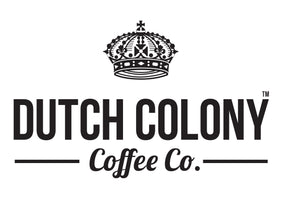Espresso or Filter?: The Three Main Differences Between Espresso and Filter Roasted Coffees
Roast profile - Most roasters I know, myself included will usually go light and gentle (light to medium light roast) with the roast profile of filtered coffee as compared to roasting for espresso coffees (medium to dark). In the former, it is all for highlighting the natural sweetness of the coffee in its fruit form as well as to showcase the nuances of the coffee while as in the espresso, it is usually to elevate the sugar browning so that the coffee does not taste under developed with the high pressure brewing.

Often than not when you are shopping for coffees in a roaster-operated-cafe, you are spoilt for choices. From choosing between single-origins or blends and diving into a much deeper hole of which blends or single-origins, with coffee growing countries beginning with the letter A-Z. (Okay, we may be exaggerating here but that is what happened when you stay home and work from home far too long and have no colleagues to banter with!)
After making your choice, there is another set of questions of what grind size to grind the coffee into (if you have been getting your barista to grind the coffees in the shop, then you need to spend about less than 20% of your Solidarity Budget payout to invest in a good hand grinder) and most of the time, this is simplified with a question from the barista, "For espresso or filter brewing?" So what are the difference between these two coffees?

Well, aside from the fact that the espresso coffees requires a much more sophisticated equipment as compared to the less expensive brewing device for filter, the difference are huge and there are definitely a lot of comparisons that can be made to describe this, but here are the three main main differences:
Caffeine Level - As we all know by now, the amount of caffeine in the cup is highly attributed to the contact time of coffee to water. One can safely described that there is at least twice the amount of caffeine in a filtered coffee as compared to espresso coffee. Although not usually detected in between sipping, those who have low tolerance with the effect of caffeine in their body will feel more discomfort after having a cup of filtered coffee as compared to perhaps, an espresso-based beverage like a latte in the same cup volume.
Coffee to Water Ratio - There are usually a higher ratio of coffee to water in a filtered style coffee (e.g. 10gm to 100ml/ 150ml of water) as compared to espresso coffee (20gm to 50/60ml of water) which makes the filtered coffee more ‘watered down’ and in this case easier to drink for the consumer. Taste profile are also usually cleaner with much clarity in filtered as compared to espresso coffee.
Roast Profile - Most roasters I know, myself included will usually go light and gentle (light to medium light roast) with the roast profile of filtered coffee as compared to roasting for espresso coffees (medium to dark). In the former, it is all for highlighting the natural sweetness of the coffee in its fruit form as well as to showcase the nuances of the coffee while as in the espresso, it is usually to elevate the sugar browning so that the coffee does not taste under developed with the high pressure brewing.
This three features has a correlation to taste-flavour attributes and because taste is subjective, it is definitely not wrong for you to purchase a bag roasted for espresso but brewing them in your V60 or Aeropress if you prefer a bolder and more developed flavour nuances.

The roaster and barista can recommend but ultimately the choice is still yours but at least now, you have a much informed knowledge on which coffee to buy and how they could be grounded.
From visual of the packaging, to assist our customers in differentiating which coffee is preferred by us to be served as espresso and filter, we packed them in two different colour packaging, with black indicating that the coffee is preferably to be served as espresso while the white indicates the coffee is best served as a filter. A tip though, most of our coffees packed in the white bag are usually versatile too for an espresso based drinks, a lot depending on your preference of the acidity of the espresso and the richness of the viscosity and body!
We hope this information helps you to improve your overall coffee experience when shopping for your coffee. Shop online now and support your local roaster!

